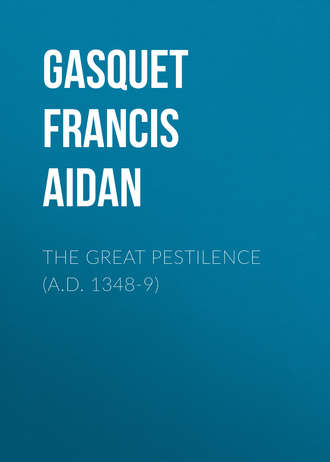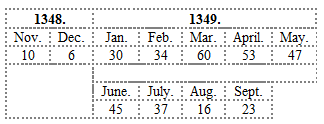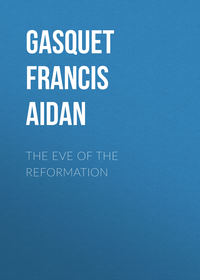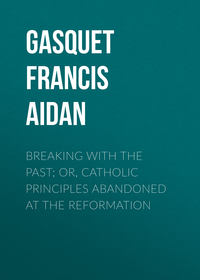 полная версия
полная версияThe Great Pestilence (A.D. 1348-9)
19
The following account of an outbreak of disease somewhat similar to the "Black Death" appeared in the British Medical Journal of 5 November, 1892: – "An official report of the Governor-General of Turkestan, which has recently been published in St. Petersburg, states that that province has been severely visited by an epidemic of 'Black Death,' which followed upon the footsteps of cholera. On September 10 (22) it appeared suddenly at Askabad, and in six days it killed 1,303 persons in a population of 30,000. 'Black Death' has long been known in Western Asia as a scourge more deadly than the cholera or the plague. It comes suddenly, sweeping over a whole district like a pestilential simoon, striking down animals as well as men, and vanishes as suddenly as it came, before there is time to ascertain its nature or its mode of diffusion. The visit here referred to was no exception to this rule. After raging in Askabad for six days the epidemic ceased, leaving no trace of its presence but the corpses of its victims. These putrified so rapidly that no proper post-mortem could be made. The Governor-General gives some details as to the symptoms and course of the disease, which, though interesting as far as they go, do not throw much light on its pathology. The attack begins with rigors of intense severity, the patient shivering literally from head to foot; the rigors occur every five minutes for about an hour. Next an unendurable feeling of heat is complained of; the arteries become tense, and the pulse more and more rapid, while the temperature steadily rises. Unfortunately no thermometric readings or other precise data are given. Neither diarrhœa nor vomiting has been observed. Convulsions alternate with syncopal attacks, and the patients suffer intense pain. Suddenly the extremities become stiff and cold, and in from 10 to 20 minutes the patient sinks into a comatose condition, which speedily ends in death. Immediately after he has ceased to breathe large black bullæ form on the body, and quickly spread over its surface. Decomposition takes place in a few minutes."
20
A Franciscan friar, Michael Platiensis (of Piazza).
21
The Archbishop was a member of the Order of St. Francis, and had been created Patriarch of Antioch.
22
Gregorio (R.), Bibliotheca Scriptorum qui res in Sicilia gestas retulere, tom. i, p. 562 seqq. The historian wrote probably not later than A.D. 1361.
23
Sismondi, Histoire des Républiques Italiennes du Moyen Age, vi, p. 11.
24
"The Decameron," Introduction.
25
Muratori, Scriptores, xiv, coll. 11–15.
26
Muratori, Scriptores, xv. 1021.
27
Ibid., xii, 926.
28
Ibid. xv, 123. At this period the population at Siena was more than 100,000, and it had been determined to proceed with the building of the vast Cathedral according to the designs of Lando Orefice. The work was hardly undertaken when the plague of 1348 broke out in the city. The operations were suspended, and the money which had been collected for the purpose was devoted to necessary public works (G. Gigli, Diario Sanese, ii, 428).
29
Muratori, Scriptores xv, 653.
30
Ibid., 902.
31
Ibid., xvi, 286.
32
A. Pezzana, Storia della città di Parma, vol. i, p. 12.
33
Historiæ Parmensis Fragmenta, in Muratori, Scriptores, xii, 746.
34
T. Michelet, Histoire de France, iv, p. 238.
35
A. Phillippe, Histoire de la Peste Noire (Paris, 1853), p. 103.
36
Epistolæ Familiares (Ed. 1601), lib. viii, pp. 290–303.
37
Muratori, Scriptores, xii, 926.
38
See his article La Medicina in Venezia nel 1300 in Archivio Veneto, tom. xxv, p. 361, seqq.
39
p. 369.
40
Ibid., 377.
41
Ibid.
42
Ibid., p. 378.
43
Ibid., p. 379.
44
Roncioni, Istorie Pisane in Archivio Storico Italiano, iv, 808.
45
Chronicon Pragense, ed. Loserth in Fontes rerum Austriacarum, Scriptores, vol. i, p. 395.
46
Labbe, Nova Bibliotheca Manuscriptorum, i, p. 343.
47
C. Anglada, Étude sur les Maladies Éteintes, p. 432.
48
Matthias Nuewenburgensis in Boehmer, Fontes rerum Germanicarum, iv, p. 261.
49
Henricus Rebdorfensis, Ibid., p. 560. Another account speaks of Marseilles remaining afterwards almost "depopulated," and of "thousands dying in the adjoining towns" (Chronicon Pragense, in Fontes rerum Austriacarum, Scriptores, i, p. 395).
50
J. Astruc, Histoire de la Faculté de Médecine de Montpellier (Montpellier, 1862), p. 184.
51
Anglada, ut supra, p. 432.
52
Opuscule relatif à la peste de 1348, composé par un contemporain in Bibliothèque de l'École des Chartes, 1e Sér., ii, pp. 201–243.
53
Martin, Histoire de France (4th ed.), v, p. 109.
54
Phillippe, Histoire de la Peste Noire, p. 103.
55
Anglada, Maladies Éteintes, p. 431.
56
Higden, Polychronicon (ed. Rolls Series), viii, p. 344.
57
L. Michon, Documents inédits sur la grande peste de 1348 (Paris, 1860), p. 22.
58
Baluze, Vitæ Paparum Avenionensium, i, p. 254. In a second life of Clement VII. (p. 274) it is said that vast pits were dug in the public cemetery, where the dead were buried "ut pecora gregatim."
59
The writer was sending his letter on April 27th, 1348, so that the period would have been about six weeks.
60
Breve Chronicon clerici anonymi, in De Smet, Recueil des Chroniques de Flandre, iii, pp. 14–18.
61
Henricus Rebdorfensis, in Boehmer, Fontes, iv, p. 560.
62
Anglada, Maladies Éteintes, pp. 413–14.
63
Barnes, History of Edward III., p. 435.
64
Thiener, Monumenta Historica Hungariæ, i, p. 767.
65
Wadding, Annales Minorum, viii, p. 25 (ed. 1723).
66
Olivier de la Haye, Poëme sur la grande peste de 1348. Introduction par G. Guigue, p. xviii, note.
67
Breve Chronicon in De Smet, Recueil des Chroniques de Flandre, iii, p. 19.
68
Delisle, Cabinet des Manuscrits, i, p. 532.
69
Ibid. Here the note abruptly finishes.
70
H. Martin, Histoire de France, v, p. 111.
71
Marlot, Histoire de Ville de Reims, iv, p. 63.
72
All copies of this chronicle give "quingente," and it has usually been stated that the number so buried each day was 500. M. Géraud, who edited the work for the Société de l'Histoire de France, suggests that it is a mistake for 50, and quotes two MSS., in which in the margin the following note is found: "L corps par jour a l'Hostel-Dieu de Paris." As this reading is more probable it has been adopted above.
73
Continuatio Chronici Guillelmi di Nangiaco, éd. pour la Société de l'Histoire de France par H. Géraud, ii, pp. 211–217.
74
They speak in the document of "the 17th of the ensuing month of July."
75
Michon, Documents inédits sur la Peste Noire, p. 22.
76
Thierry, Recueil des Monuments inédits de l'Histoire du Tiers Etat, i, p. 544.
77
Ibid., p. 546.
78
"Certe dicere timeoQuæ vidi et quæ videoDe ista pestilentia."79
Gams, Series Episcoporum, gives 13th June, 1349, as the day of his death.
80
"Quia de sacerdotibusInfirmos visitantibusQuamplurimi defecerunt."81
Chronicon majus Ægidii Li Muisis, abbatis Sti. Martini Tornacensis, in De Smet, Receuil des Chroniques de Flandre, ii, pp. 279–281 and 361–382.
82
S. Luce, Bertrand du Guesclin, i, ch. 3.
83
Piot, Cartulaire de l'abbaye de Saint-Trond, i, 507.
84
Lechner, Das grosse Sterben in Deutschland, p. 93.
85
Phillippe, Histoire de la Peste Noire, p. 54.
86
Ibid., pp. 54–56.
87
This was a place of pilgrimage on the Amadour, not far from Toulouse.
88
Chronicon majus Ægidii Li Muisis, ii, 280.
89
Lechner, Das grosse Sterben in Deutschland, p. 21.
90
Farlati, Illyricum Sacrum, iii, p. 324.
91
Lechner, ut sup., p. 22.
92
Ibid.
93
Ibid., p. 23.
94
Annales Matscenses in Mon. Germ., ix, 829.
95
Annales Mellicenses, Ibid., p. 313.
96
Continuatio Novimontensis, Ibid., p. 675.
97
Chronicon, in Muratori, xvi, 361. He places the event under the year 1347.
98
Ibid., 298.
99
Lechner, ut sup., p. 27.
100
Ibid.
101
Annales Engelbergenses, in Mon. Germ., xvii, 281.
102
Dlugoss, Historia Polonica, in Philippe, ut sup., p. 94.
103
Kalendarium Zwetlense, in Mon. Germ., ix, 692.
104
Annales Matscenses, Ibid., 829.
105
Continuatio Novimontensis, Ibid., 675.
106
Chronicon Pragense, ed. Loserth (in Fontes rerum Austriacarum, Scriptores, t. viii) p. 603.
107
Lechner, ut sup., p. 35.
108
Ibid., p. 38.
109
Boehmer, Fontes rerum Germ., iv, 434.
110
Hoeniger (R.), Der schwarze Tod in Deutschland (Berlin, 1882), p. 26.
111
Philippe, ut sup., p. 124.
112
Historia, iii, 406.
113
Finn Jonsson, Hist. eccl. Islandiæ, ii, p. 198, says that most of the Bishops died, and that Ormus, Bishop of Holar, in Iceland, who happened then to be in Norway, solus fere evasit. It appears that the archbishopric of Nidaros, or Drontheim, at that time comprised seven sees. Changes appear in six of these at this time, including Drontheim and Bergen; and of Solomon, Bishop of Oslo, it is said that "he was the only Bishop who survived the plague" (Gams, Series Episcoporum, 336). The same account is given in the monastic chronicles of Iceland (Ftateyjarbok, iii, p. 562).
114
Henric Jacob Sirers, Historisk Beskrifning om then Pesten, p. 23.
115
Langebeck, Scriptores rerum Danicarum, vi, 564. I am indebted for much assistance in all that regards the plague in the north of Europe to Dr. Lindstrom, of the Riksmusei, Stockholm. He kindly examined for me the original MS. of the Franciscan Necrology at Wisby.
116
Langebeck, ut sup., i, 307, 395.
117
Ibid., vii, p. 2, et seqq.
118
Pezzana, Storia di Parma, i, 52.
119
Henricus de Hervordia, Chronicon ed. Potthast, 274.
120
Lechner, ut sup., p. 73.
121
Originalia Roll, 24 Ed. III., m. 2.
122
B. Mus., Harl. MS. 6965, f. 132.
123
Chronicon Galfridi le Baker, ed. E. M. Thompson, p. 98.
124
Eulogium Historiarum (ed. Rolls series), iii, p. 213. It seems not at all improbable that this account was written whilst the plague was still confined to the west of England.
125
Harl. MS. 688, f. 361.
126
Hutchins, History of Dorset (3rd ed.), ii, p. 422.
127
Rot. Pat., 26 Ed. III., pars 3, m. 5.
128
Historical Manuscripts Commission, Eighth Report, App., p. 338.
129
De Gestis Edwardi III. (ed. Rolls series), p. 406.
130
As will be seen subsequently, this estimate of Dr. Jessopp is certainly too low, and it is probably more correct to suppose that the non-beneficed clergy, including under that head the religious, were four times as numerous as those holding benefices.
131
The following table will show the actual number of institutions in Dorsetshire for some months: —

132
Originalia Roll, 22 Ed. III., m. 4.
133
Hist. MSS. Comm., Sixth Report, p. 475.
134
History of Dorset, i, p. 5.
135
Curates here and elsewhere is used for Rectors or Vicars, who had the actual cure of souls.
136
Wilkins, Concilia, ii, pp. 735–6.
137
The following is a table of the institutions in Somersetshire for some months: —

138
Bath Chartulary (Lincoln's Inn MS.), p. 119. This is now being edited for the Somerset Record Society, and the list is given at p. 73 of Mr. Hunt's edition.
139
R. O. Clerical Subsidy (Somerset), 4/2.
140
See list given in Deputy Keeper's Report, vii, p. 280.
141
W. Hunt, Historic Towns, Bristol, p. 77.
142
S. Seyer, Memoirs of Bristol (Bristol, 1823) ii, p. 143.
143
Rot. Pat., 23 Ed. III., pars 3, m. 4.
144
For information about the institutions of this diocese and other matters concerning Devon and Cornwall, I am indebted to the kindness of the Rev. Prebendary Hingeston-Randolph.
145
Curiously enough the number of institutions in 1891 was 36.
146
The following table will give the number of institutions in Devon and Cornwall in each month: —

147
The Prior of St. James', Exeter, also died: "postea tempore pestilencie subito mortuus est." (Reg. Grand., i, fol. 27b).
148
Rot. Pat., 29 Ed. III., pars 2, m. 19.
149
B. Mus., Arund. MS. 17, fol. 55b. Oliver (Monasticon Dioecesis Exoniensis, p. 359) adds: "And no fewer than 88 persons living within the Abbey gates." In Noakes' History of the Monastery and Cathedral of Worcester, p. 94, it is said that the virulence of the plague of 1349 may be judged "from the fact that in the Abbey of Newenham, in the West of England, out of a hundred and eleven inmates, only the Abbot and two monks survived." No authority is cited by these writers.
150
Reg. Grandisson, i, 26b.
151
Itinerarum, ed. J. Nasmith, p. 112.
152
Sir J. Maclean, Deanery of Trigg Minor, i, p. 128.
153
Reg. Grandisson, i, 26b.
154
Eulogium Historiarum (Rolls series), iii, p. 213.
155
Annales de Bermundeseia in Annales Monastici (Rolls series), iii, p. 475.
156
De gestis Edwardi III (Rolls series), p. 406.
157
Rymer, Fœdera, v, p. 655.
158
Survey of London (ed. Strype), ii, p. 13.
159
Dr. Creighton, History of Epidemics in Britain, p. 128, quotes Rickman, Abstract of the Population Returns of 1831, as estimating the total deaths in London at 100,000, and considers even the 50,000 as altogether impossible. In fact, he is inclined to think that in 1349 the population of London "was probably not far from" 44,770 only.
160
Brooke Lambert, London, i, p. 241.
161
Dr. Creighton (ut sup., p. 129) mentions that "in the charter of incorporation of the Company of Cutlers, granted in 1344, eight persons are named as wardens, and these are stated in a note to have been all dead five years after, that is to say, in the year of the Black Death, 1349, although their deaths are not set down to the plague. Again, in the articles of the Hatters' Company, which were drawn up only a year before the plague began (December 13, 1347) six persons are named as wardens, and these according to a note of the time were all dead before the 7th of July, 1350, the cause of the mortality being again unmentioned, probably because it was familiar knowledge to those then living. It is known also that four wardens of the Goldsmiths' Company died in the year of the Black Death."
162
Calendar of Wills in the Court of Hustings, London, ed. R. R. Sharpe, i, p. xxvii.
163
The following is a table of the numbers: —

164
Rymer, Fœdera, v, p. 658.
165
B. Mus. Cotton MS. Vitell. E. xiv, f. 129b.
166
R. O., L. T. R. Memoranda Roll, 25 Ed. III., m. 26.
167
Gesta Abbatum S. Albani (Rolls series), ii, p. 369.
168
Ibid., p. 381.
169
The following is a table of the Institutions given in Clutterbuck's Hertfordshire: —

170
Six Centuries of Work and Wages, i, p. 225.
171
Thus, some eight standing on the roll together direct inquiries into deaths of various landed proprietors at Hornseaburton, in Holderness. R. O., Originalia Roll, 23 Ed. III., m. 17.
172
R. O., Chancery Inq. post mortem, 23 Ed. III., No. 85.
173
Ibid., No. 75.
174
Ibid., No. 77.
175
Ibid. (second numbers), No. 58.
176
Cf. four inquisitions in this country: Escheator's Inq. post mortem, file 103.
177
See Lipscombe's History of Buckinghamshire.
178
The following is a table of the dated institutions: —

179
Hist. MSS. Comm., Eighth Report, p. 336.
180
Wharton, Anglia Sacra, i, p. 42.
181
J. E. Thorold Rogers, Six Centuries of Work and Wages, i, p. 221.
182
Gesta Abbatum (Rolls series).
183
Hist. MSS. Comm., Eighth Report, p. 336. Batteley's copy of this commission is in B. Mus. Add. MS., 22, 665, fol. 183.
184
Escheator's Inq. p.m., 23 Edw. III., Kent.
185
Some six miles from Rochester.
186
Nine miles from Maidstone.
187
Wharton, Anglia Sacra, i, pp. 375–6. This is an abstract of Dene's account in the Rochester cartulary, B. Mus. Cotton MS., Faust. B. v, ff. 96 et seqq. Cf. also Vitell. E. xiv, ff. 375 et seqq.
188
B. Mus. Faust. B., v, f. 98.
189
Ibid., fol. 99.
190
For the use of his transcripts of the Bishop's Register, as well as for assistance in all that relates to the Winchester diocese, I am indebted to the kindness of F. J. Baigent, Esq., of Winchester.
191
Reg. Edyndon, ii, fol. 17.
192
Ibid., ff. 17b-18.
193
Ibid., fol. 19. The Indulgence was to last until Easter, but the time was subsequently extended to the feast of St. Michael. This extension was notified from Avignon by letter dated 28th April, 1349; the Pope here granted the extension verbally. On 25th May Bishop Edyndon sent out the announcement of the extension, and ordered it to be made known at once.




